Smartwatch Wars: Apple Watch vs. Fitbit
17 February 2025
Smartwatches have become more than just a cool gadget on your wrist—they're now fitness trackers, notification centers, and even personal assistants. When it comes to choosing the best smartwatch, two names often dominate the conversation: the Apple Watch and Fitbit. Both brands bring a lot to the table, but they cater to slightly different audiences. Whether you're into fitness tracking, productivity, or just want to look stylish, settling the Apple Watch vs. Fitbit debate can feel like a tough call.
In this article, we’ll dive deep into the key features, design, usability, fitness tracking, price, and ecosystem to help you decide which wearable is the right fit for you.
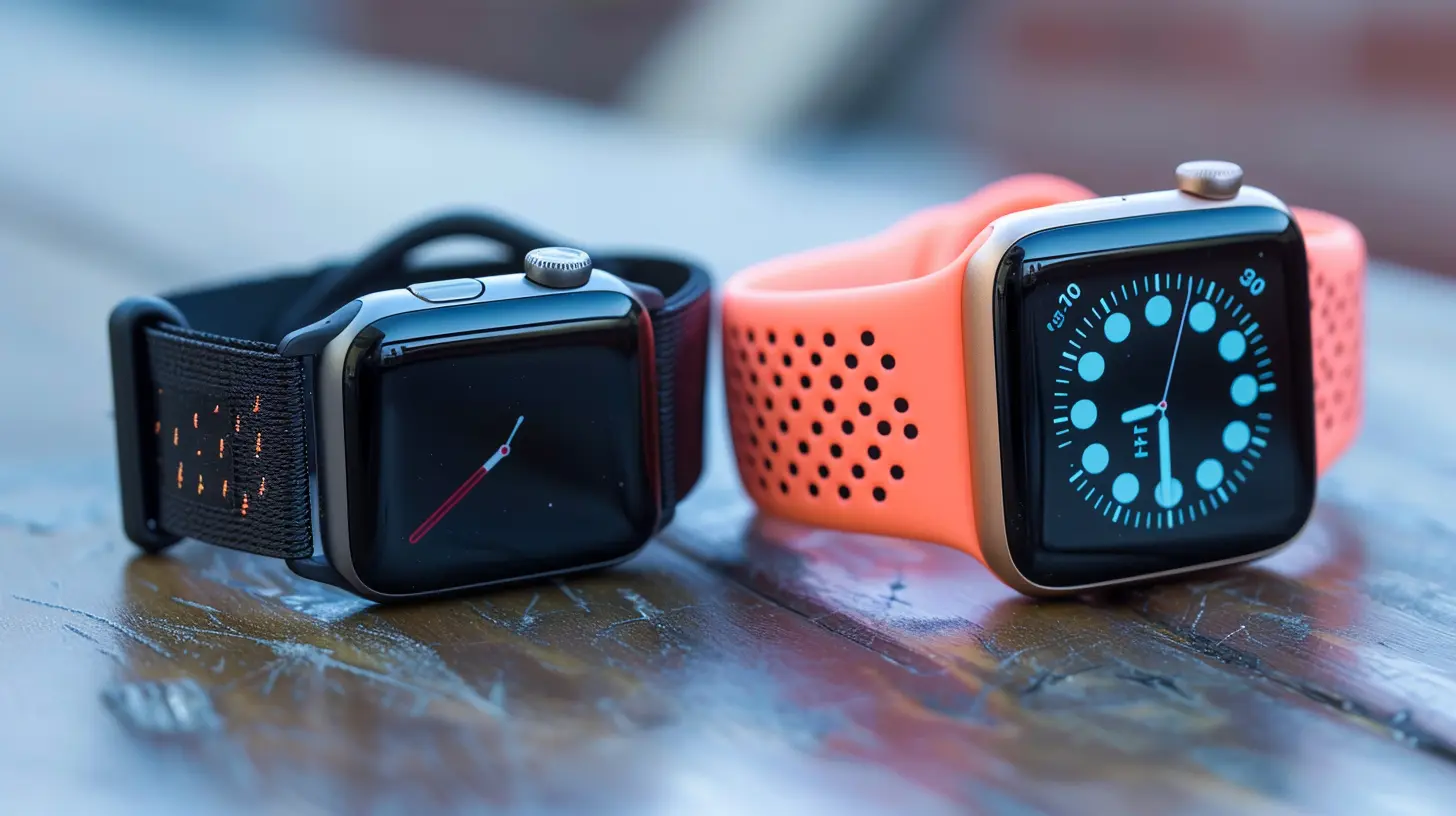
Table of Contents
1. Design and Build Quality2. Display and Interface
3. Fitness Tracking and Health Features
4. Smart Features
5. Battery Life
6. Compatibility and Ecosystem
7. Price Comparison
8. Which One is Right for You?
9. Conclusion
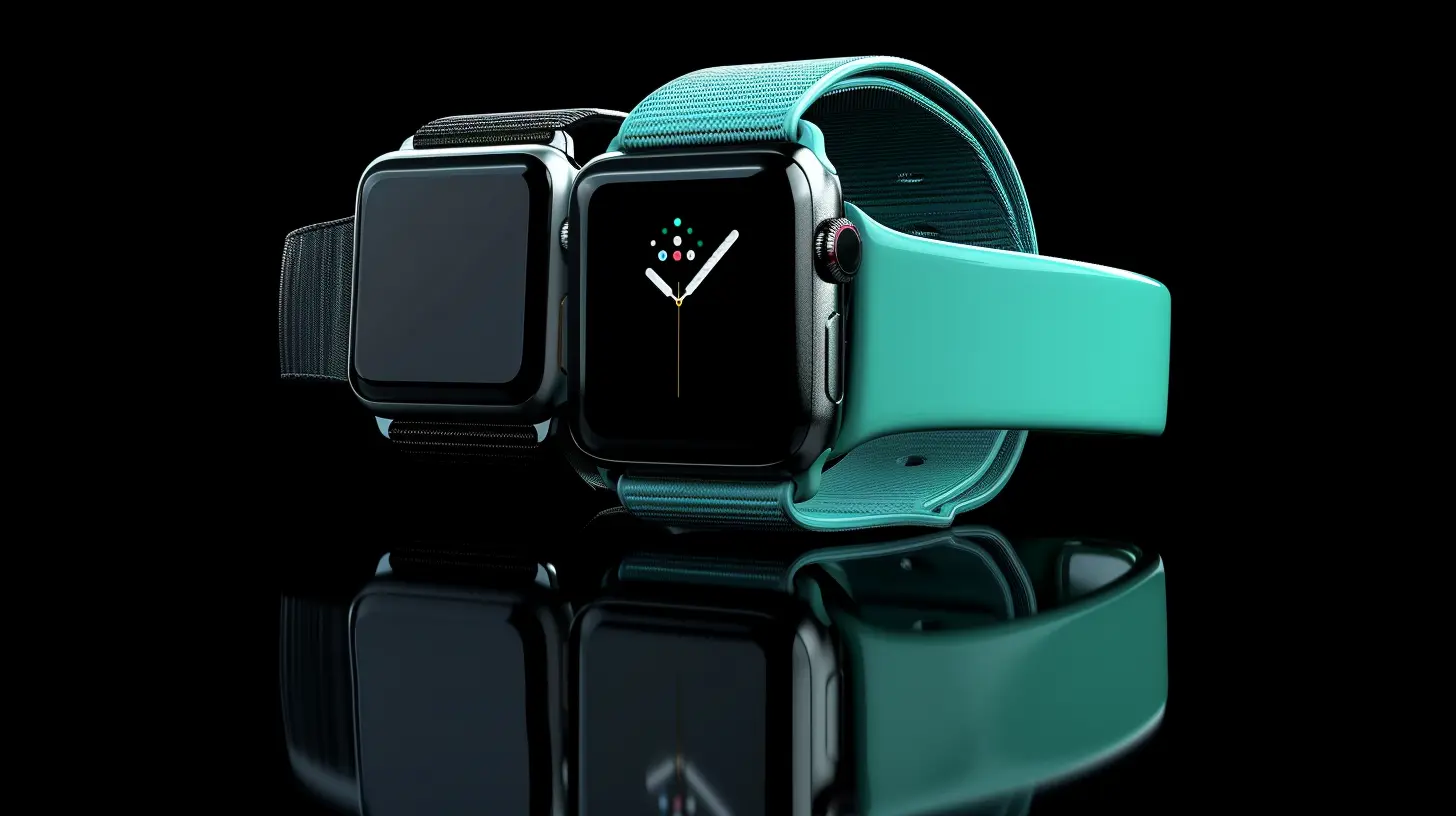
Design and Build Quality
Apple Watch
Apple has always been known for its premium design, and the Apple Watch is no exception. With its sleek, square-shaped face and customizable bands, it’s more of a fashion statement than just a fitness tracker. The materials vary from aluminum to stainless steel, and even titanium for higher-end models. The watch feels solid, luxurious, and stylish, making it suitable for every scenario—from casual outings to formal meetings.Fitbit
Fitbit, on the other hand, has a more utilitarian design. While newer models like the Fitbit Sense or Versa 3 have made strides in aesthetics, they still lean heavily towards function over form. Fitbit watches are generally lighter, smaller, and more minimalist compared to Apple Watch models. For those who prefer something subtle and fitness-focused, Fitbit’s design might appeal more.Verdict: If you’re looking for a smartwatch that can double as a fashion accessory, Apple Watch takes the cake. However, for those who prefer a low-profile, fitness-first approach, Fitbit’s design might suit you better.
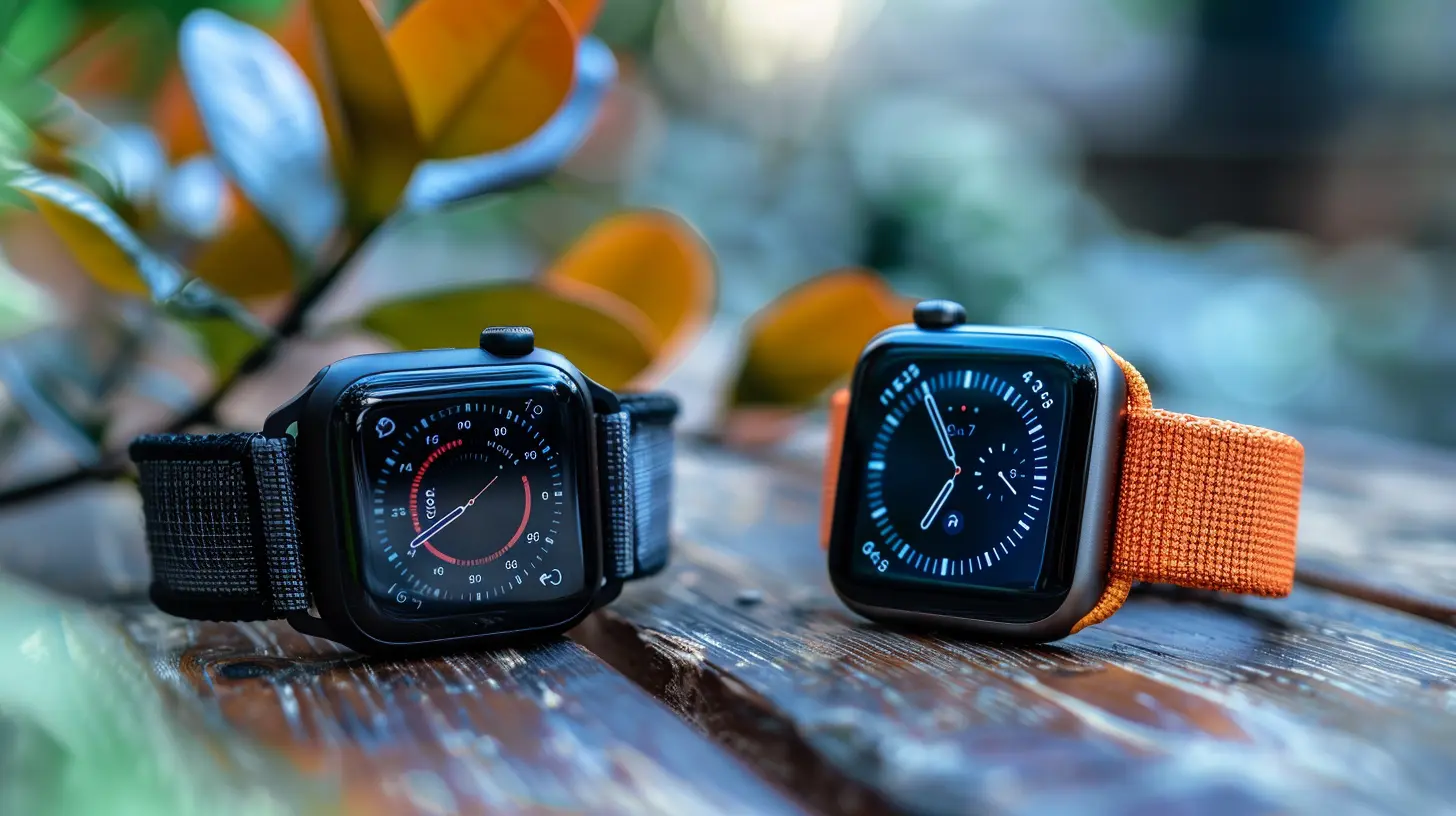
Display and Interface
Apple Watch
There's no denying the Apple Watch wins in the display department. Its Retina OLED screen is crisp, vibrant, and easily readable even in direct sunlight. The touch interface is smooth, intuitive, and combined with the digital crown, makes navigation a breeze. The larger, edge-to-edge display on newer Apple Watch models, like the Series 7, offers a visually stunning experience.Fitbit
Fitbit’s display, while functional, doesn’t quite match the Apple Watch in terms of clarity or responsiveness. Models like the Fitbit Sense and Versa 3 feature AMOLED displays, which are bright and colorful but not as sleek or high-resolution as Apple’s Retina display. The interface is simple and user-friendly but feels less polished compared to Apple’s.Verdict: Apple Watch wins when it comes to display quality and user interface. It’s hard to beat that Retina OLED screen!
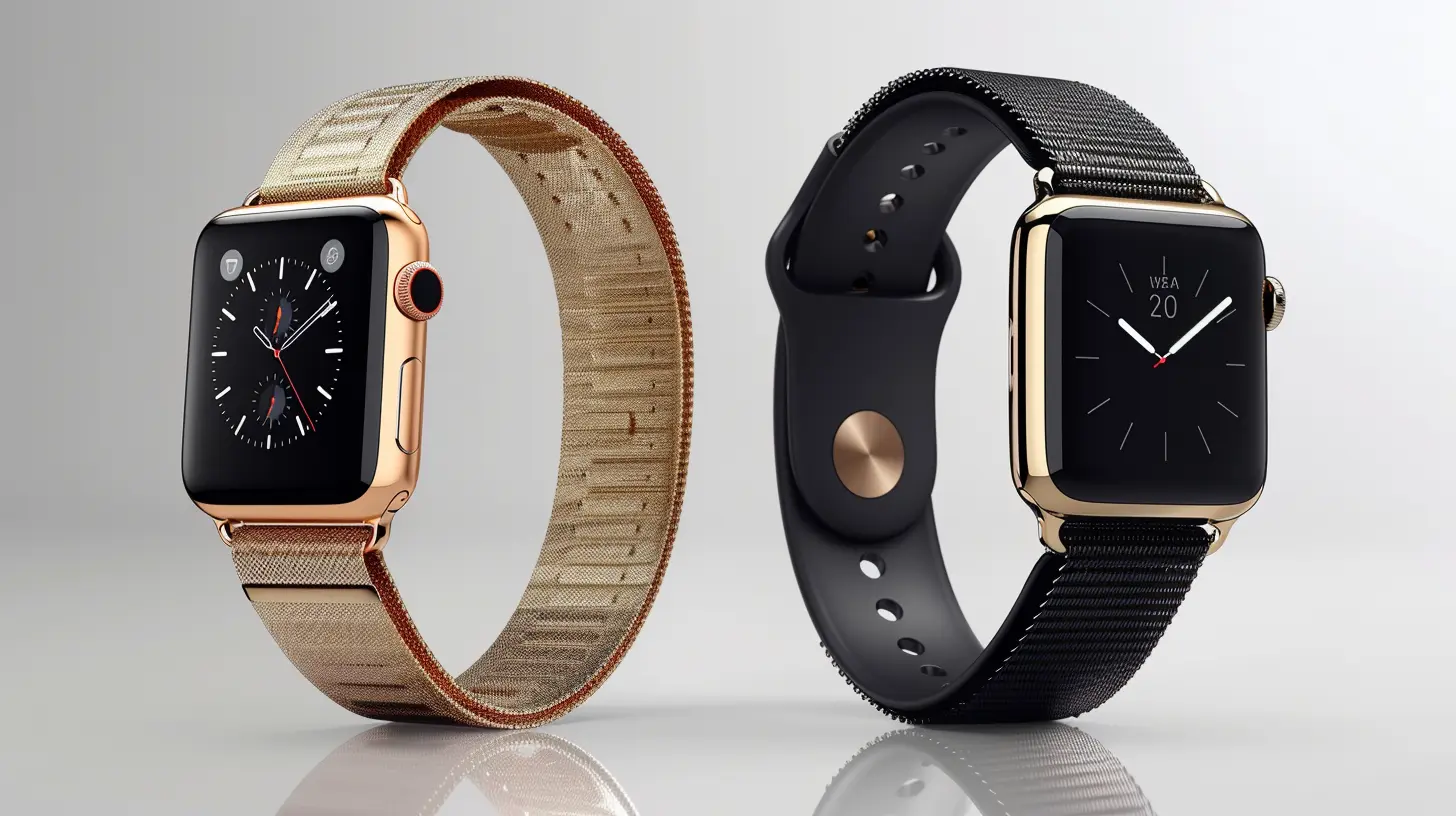
Fitness Tracking and Health Features
Apple Watch
When it comes to fitness tracking, the Apple Watch offers a well-rounded package. It tracks steps, calories burned, and heart rate, and provides reminders to stand and move throughout the day. The Apple Watch also offers advanced health features like ECG (electrocardiogram) monitoring, blood oxygen sensors, and fall detection.For runners or cyclists, the Apple Watch comes with built-in GPS and can track elevation changes, distance, and pace. The Fitness+ integration is another huge plus, offering guided workouts that sync with the watch to display real-time metrics.
Fitbit
Fitbit has long been synonymous with fitness tracking, and it shows. Fitbit watches are loaded with features like heart rate monitoring, sleep tracking, step counting, and calorie burn tracking. Fitbit's sleep-tracking capabilities are particularly strong, offering detailed insights into your sleep stages (light, deep, and REM).Fitbit also has a built-in ECG sensor, SpO2 monitoring, and stress management tools like skin temperature readings and guided breathing exercises. However, Fitbit’s edge comes from its robust community features such as challenges, leaderboards, and goal-based tracking.
Verdict: Fitbit edges out Apple Watch when it comes to fitness tracking, especially in areas like sleep tracking and community engagement. Apple Watch, however, wins with its advanced health monitoring features.
Smart Features
Apple Watch
Here’s where the Apple Watch truly shines. It’s essentially a mini iPhone on your wrist. You can send messages, receive calls, listen to music, and even use apps directly from the watch. Apple Pay allows for contactless payments, and Siri can handle reminders, alarms, and even smart home controls. The Apple Watch also offers seamless integration with other Apple devices, allowing you to unlock your Mac, control your Apple TV, and more.Fitbit
Fitbit smartwatches have improved their smart features over the years, but they still lag behind Apple. You can receive notifications, make quick replies (on Android only), and control music, but the experience is less fluid. Fitbit Pay is available on some higher-end models, but it’s not as widely accepted as Apple Pay. On the bright side, Fitbit does offer voice assistants like Amazon Alexa and Google Assistant, though they can be slow to respond.Verdict: Apple Watch completely dominates when it comes to smart features. If you want a smartwatch that can replace your phone for small tasks, Apple Watch is the way to go.
Battery Life
Apple Watch
Battery life is one of the few areas where the Apple Watch falls short. Most models will last about 18 hours on a single charge, meaning you’ll need to charge it every night. While newer models have made slight improvements, Apple Watch is not designed to last multiple days without a charge—especially if you’re using GPS, streaming music, or taking calls.Fitbit
Fitbit wins hands down in the battery life department. Most Fitbit watches, like the Versa 3 or Sense, can last anywhere from four to six days on a single charge. Even with continuous heart rate monitoring and GPS usage, you’ll still get more battery life out of a Fitbit than an Apple Watch. For those who don’t want to worry about charging their watch every night, Fitbit is the clear winner.Verdict: Fitbit is the champion of battery life. If you’re looking for a smartwatch that can last several days without needing a charge, Fitbit is your best bet.
Compatibility and Ecosystem
Apple Watch
The Apple Watch is designed exclusively for iPhone users. If you’re in the Apple ecosystem, the integration is seamless. You can sync your watch with your iPhone, iPad, or Mac, and enjoy features like Handoff, AirDrop, and instant iCloud syncing. However, if you’re an Android user, the Apple Watch is unfortunately off the table.Fitbit
Fitbit works with both iOS and Android, which makes it a more versatile option for users across different platforms. While the experience may be slightly better on Android (e.g., the ability to reply to messages), Fitbit is a great option regardless of your phone brand.Verdict: If you’re an iPhone user, the Apple Watch will fit perfectly into your digital life. But if you’re on Android or prefer more flexibility, Fitbit is the way to go.
Price Comparison
Apple Watch
Apple Watches are generally more expensive, especially the newer models. The latest Apple Watch Series 7 starts at around $399, while the more affordable Apple Watch SE starts at $279. If you want the best of the best, you’ll have to shell out quite a bit more, especially if you go for stainless steel or titanium versions.Fitbit
Fitbit offers more affordable options. The Fitbit Versa 3, for example, costs around $229, while the more premium Fitbit Sense is priced at $299. Fitbit also has budget-friendly fitness trackers like the Fitbit Charge, which offers many core features for less than $150.Verdict: Fitbit offers more budget-friendly options, while the Apple Watch tends to be more expensive. If price is a major consideration, Fitbit might be the better choice for you.
Which One is Right for You?
If you’re someone who loves Apple products and wants a smartwatch that does everything—fitness tracking, notifications, music, and apps—the Apple Watch is the clear winner. It’s perfect for iPhone users who want seamless integration with their other devices.Fitbit, on the other hand, is the go-to choice for fitness enthusiasts. If you’re more concerned with tracking your health, sleep, and fitness progress—and want something that lasts longer between charges—Fitbit is likely the better option.
It really boils down to your priorities. Do you want a smartwatch that acts as an extension of your phone? Apple Watch. Do you want a health-focused wearable with amazing battery life? Fitbit.
Conclusion
The Apple Watch and Fitbit are both strong contenders in the smartwatch game, but they cater to different needs and preferences. Apple Watch stands out with its advanced smart features and seamless integration into the Apple ecosystem, while Fitbit excels in fitness tracking, battery life, and affordability.Whichever you choose, both devices will help you stay active, connected, and stylish. So, the real question is: What’s more important to you—smart features or fitness tracking?
all images in this post were generated using AI tools
Category:
Gadget ComparisonsAuthor:

Gabriel Sullivan
Discussion
rate this article
21 comments
Seraphine Jackson
The battle between Apple Watch and Fitbit showcases the incredible innovation in wearable technology! Each brand offers unique features that cater to diverse lifestyles and preferences. As they push each other to improve, consumers benefit from better options. Embrace this exciting era of health and connectivity—your journey to wellness awaits!
March 25, 2025 at 4:24 AM

Gabriel Sullivan
Thank you for your insightful comment! It’s true that the competition between Apple Watch and Fitbit is driving innovation and providing consumers with diverse options for health and connectivity. Exciting times ahead!
Fay Hall
Apple Watch: for those who want style with their stats. Fitbit: for fitness fanatics who can’t be bothered to look good while sweating!
March 16, 2025 at 5:09 AM

Gabriel Sullivan
Great summary! Apple Watch blends fashion and functionality, while Fitbit focuses on fitness without the frills. Both serve distinct purposes for their users!
Amy McIlwain
Great article! It's fascinating to see how Apple Watch and Fitbit cater to different audiences. Both have unique features that keep the smartwatch game exciting!
March 14, 2025 at 8:32 PM

Gabriel Sullivan
Thank you! I'm glad you found it interesting. Both devices definitely bring unique strengths to the table!
Serenity Palmer
Excited to see how they compete!
March 10, 2025 at 7:15 PM

Gabriel Sullivan
Thanks for your excitement! It's going to be an interesting showdown.
Onyx Williams
Ultimately, choice depends on personal needs; both excel in their unique strengths.
March 9, 2025 at 12:15 PM

Gabriel Sullivan
Absolutely! Personal needs and preferences play a crucial role in choosing between the Apple Watch and Fitbit. Each offers distinct advantages tailored to different users.
Carly White
Embrace innovation, choose your perfect fit!
March 8, 2025 at 8:39 PM

Gabriel Sullivan
Absolutely! Both brands offer unique features that cater to different lifestyles. Choose the one that aligns with your needs!
Selah Frye
Ultimately, it depends on your priorities: Apple's seamless integration with iOS or Fitbit's fitness focus. Each has its strengths.
March 8, 2025 at 12:10 PM

Gabriel Sullivan
Absolutely, it really comes down to individual needs—whether you value Apple's ecosystem or Fitbit's emphasis on health and fitness.
Henry Hill
This article offers a compelling comparison between the Apple Watch and Fitbit, highlighting their unique features, ecosystem integration, and target audiences. Both devices excel in fitness tracking, but user preferences on functionality and design will ultimately shape their market positions.
March 8, 2025 at 3:38 AM

Gabriel Sullivan
Thank you for your insightful comment! I’m glad you found the comparison helpful in understanding the key distinctions between the Apple Watch and Fitbit. User preferences will indeed play a crucial role in shaping their success.
Amos Hernandez
Exciting showdown! Can't wait to see who wins!
March 5, 2025 at 7:26 PM

Gabriel Sullivan
Thanks for your enthusiasm! It’s going to be a thrilling comparison!
Quincy Barnes
“Fitbit who? Apple Watch reigns supreme, darling!”
March 5, 2025 at 1:27 PM

Gabriel Sullivan
Both have their strengths, but it's all about personal preference! What features matter most to you?
Elijah Burton
In the battle of the wrist, it’s like the Apple Watch is the suave rich kid and Fitbit is the dedicated gym buddy—who’s your pick for the ultimate accessory?
March 2, 2025 at 3:19 AM

Gabriel Sullivan
I appreciate both for their unique strengths! It ultimately depends on whether you prioritize style and versatility (Apple Watch) or fitness-focused features and affordability (Fitbit). What do you value most?
Hailey Cooper
As the smartwatch battlefield heats up, hidden secrets lie beneath sleek surfaces. Which titan will reign supreme in innovation, health tracking, and user loyalty? The answer may redefine more than just timekeeping—stay tuned for the unfolding saga.
March 1, 2025 at 4:22 AM

Gabriel Sullivan
Thank you for your insightful comment! The competition between Apple and Fitbit is indeed a thrilling saga, and it will be fascinating to see how innovation and user loyalty shape the future of smartwatches. Stay tuned!
Dixie Bennett
Both the Apple Watch and Fitbit offer unique features; choose based on your fitness needs and ecosystem preferences.
February 28, 2025 at 1:39 PM

Gabriel Sullivan
Absolutely! It ultimately comes down to personal fitness goals and the technology ecosystem you prefer.
Trinity McDermott
As a devoted user of both brands, I appreciate the unique strengths each offers. This article beautifully captures the essence of the Apple Watch and Fitbit. Great insights!
February 27, 2025 at 7:59 PM

Gabriel Sullivan
Thank you for your kind words! I'm glad you enjoyed the article and found the insights valuable.
Gwen McMaster
As a longtime tech enthusiast, I appreciate this insightful comparison. Both the Apple Watch and Fitbit offer unique features catering to different lifestyles. It's exciting to see how each brand innovates, pushing the boundaries of wearable technology for better health and connectivity.
February 27, 2025 at 11:15 AM

Gabriel Sullivan
Thank you for your comment! It's great to hear your perspective on the unique strengths of both devices in the evolving world of wearables.
Eliana McWain
Ah, the epic showdown! It’s like a stylish tech duel where Apple flaunts elegance while Fitbit flexes fitness. Who will come out on top in this smartwatch saga? Let the wrist battle begin!
February 26, 2025 at 9:46 PM

Gabriel Sullivan
Thanks for the comment! It's definitely an exciting clash of style and functionality in the smartwatch arena. Let the best watch win!
Shiloh Ramos
Both have their perks! Love the rivalry—makes tech so exciting!
February 26, 2025 at 3:25 AM

Gabriel Sullivan
Absolutely! The competition drives innovation and gives consumers great options.
Thomas Graham
Both the Apple Watch and Fitbit offer unique features catering to different users; choosing depends on your lifestyle and needs.
February 25, 2025 at 5:49 AM

Gabriel Sullivan
Absolutely! Each smartwatch is tailored to specific preferences, so it's all about finding the right fit for your lifestyle.
Arwenia Baxter
Apple Watch and Fitbit: the ultimate showdown! Who knew monitoring your heart rate could spark such tech drama?
February 24, 2025 at 1:48 PM

Gabriel Sullivan
Indeed! The rivalry between Apple Watch and Fitbit highlights how personal health tech can ignite passionate debates among fans.
Zarenith Whitley
The battle of smartwatches ignites innovation! Apple Watch and Fitbit push boundaries, empowering users to take control of their health and redefine connectivity. Choose your champion!
February 24, 2025 at 5:03 AM

Gabriel Sullivan
Absolutely! The competition between Apple Watch and Fitbit is driving exciting innovations in health and connectivity, making it a win-win for consumers. Let's see who will emerge as the champion!
Owen Barker
Great analysis! It’s fascinating to see how both Apple Watch and Fitbit cater to different lifestyles. Each offers unique features that truly enhance health and connectivity. Excited to see where this competition leads!
February 21, 2025 at 4:38 AM

Gabriel Sullivan
Thank you! It's exciting to see how these brands innovate to meet diverse user needs. The competition certainly drives enhancements in technology and features!
MORE POSTS

A Detailed Look at the Best Budget Laptops for Students

The Rise of Smart Fabrics: Merging Fashion and Technology

The Role of Blockchain in Securing IoT Networks

Bluetooth Earbuds Battle: AirPods Pro vs. Jabra Elite

Innovation Unveiled: Tech Conferences to Attend

The Latest Breakthroughs in Quantum Computing

The Challenges and Opportunities in Developing AR Glasses

The Future of AI: How Machine Learning Is Shaping Tech Today

The Future of Wireless Charging: What’s Next?

Power Banks for Every Occasion: A Detailed Review
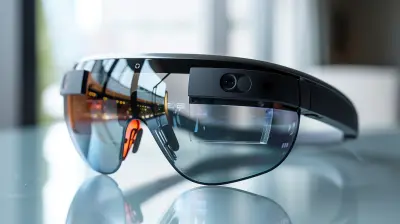
How AR Glasses Are Improving Industrial Training
Fitbit vs. Samsung Galaxy Watch: Best Wearable for Fitness Tracking
How to Sync Your Fitness Tracker with Other Health Apps